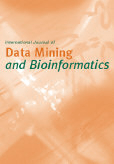
International Journal of Data Mining and Bioinformatics
Scope & Guideline
Transforming Data into Biological Discoveries.
Introduction
Aims and Scopes
- Data Mining Techniques and Applications:
The journal extensively covers a variety of data mining methods and their applications across different domains, emphasizing the use of artificial intelligence and machine learning in extracting valuable insights from large datasets. - Bioinformatics Innovations:
It focuses on advancements in bioinformatics, exploring computational approaches to analyze biological data, such as genomics, proteomics, and pharmacology, to enhance understanding of biological processes and disease mechanisms. - Interdisciplinary Research:
The journal promotes interdisciplinary research that integrates data science with fields like healthcare, environmental science, and economics, showcasing how data-driven approaches can address complex real-world problems. - Emerging Technologies in Data Science:
The journal highlights the role of emerging technologies, such as blockchain, edge computing, and IoT, in transforming data management and analysis, thereby improving efficiency and security in various applications. - Educational and Organizational Applications:
It also examines the application of data mining in educational settings and organizational decision-making, focusing on optimizing processes and enhancing learning experiences through data insights.
Trending and Emerging
- Artificial Intelligence and Machine Learning:
There is a significant increase in research applying AI and machine learning techniques to various domains, particularly in healthcare and finance, indicating a growing reliance on these technologies for data analysis and decision-making. - Big Data Analytics:
The emphasis on big data analytics has risen, with numerous studies dedicated to leveraging large datasets for insights in areas such as health security, disaster management, and consumer behavior. - Digital Economy Applications:
Research exploring the implications of the digital economy on business processes, such as e-commerce and financial management, is emerging as a key focus, reflecting the transformative impact of digital technologies. - Integration of IoT and Data Mining:
There is a growing trend in integrating IoT with data mining techniques, particularly for optimizing logistics and supply chain management, showcasing the importance of real-time data analysis. - Network Pharmacology and Drug Development:
The exploration of network pharmacology in drug discovery and disease treatment is becoming increasingly relevant, highlighting its potential to uncover complex biological interactions and therapeutic targets.
Declining or Waning
- Traditional Statistical Methods:
There seems to be a decline in the publication of papers focusing solely on traditional statistical methods for data analysis. As machine learning and AI techniques gain traction, the reliance on conventional statistics is waning. - Basic Bioinformatics Tools:
The exploration of basic bioinformatics tools and techniques has decreased, possibly due to the emergence of more sophisticated methods and frameworks that provide enhanced capabilities for data analysis and interpretation. - Single-Domain Focus Studies:
Research that focuses on single-domain applications of data mining, especially those that do not integrate interdisciplinary approaches, is less frequently seen, indicating a shift towards more complex, multi-faceted research questions. - Manual Data Processing Techniques:
Papers that emphasize manual or semi-automated data processing methods are becoming less common as the field moves towards fully automated solutions powered by artificial intelligence and machine learning. - Low-Impact Case Studies:
There is a noticeable decline in low-impact case studies that do not contribute significantly to theoretical advancements or practical applications, reflecting a trend towards more impactful and innovative research.
Similar Journals

Intelligent Data Analysis
Connecting Minds to Revolutionize Data AnalysisIntelligent Data Analysis is a highly regarded journal published by IOS Press, specializing in the fields of Artificial Intelligence, Computer Vision, and Pattern Recognition. With its ISSN 1088-467X and E-ISSN 1571-4128, the journal has been a cornerstone of scholarly communication since its inception in 1997, serving as a vital resource for researchers, professionals, and students engaged in advancing methodologies and applications in intelligent data analysis. The journal maintains its significance with impressive Scopus ranks, indicating its notable position within the academic community. Although currently not an Open Access journal, Intelligent Data Analysis offers a wealth of insights and findings, encouraging collaboration and knowledge exchange among its readership. With an impact factor reflective of its rigorous selection processes, the journal traverses a broad range of topics, contributing to ongoing discussions and innovations in its field. As the journal looks toward shaping future research until 2024 and beyond, it remains a pivotal platform for disseminating cutting-edge research and fostering academic inquiry.

Algorithms for Molecular Biology
Unlocking the complexities of life with cutting-edge algorithms.Algorithms for Molecular Biology, published by BMC, is a premier Open Access journal dedicated to advancing the field of molecular biology through innovative computational methods. Since its inception in 2006, the journal has provided a vital platform for researchers to share their findings and methodologies, covering a diverse range of topics at the intersection of applied mathematics, computational theory, and molecular biology. With a notable impact factor reflected in its Scopus ranks, including a Q2 classification in both applied mathematics and computational theory, as well as Q3 in molecular and structural biology, the journal plays an essential role in this rapidly evolving discipline. The wide accessibility of articles published under the Open Access model ensures that research findings reach a global audience, fostering collaboration and innovation amongst scientists and professionals alike. As we look towards converging years from 2006 to 2024, Algorithms for Molecular Biology continues to uphold the highest standards of scientific integrity and excellence, reinforcing its status as a key resource for those engaged in the profound complexities of molecular biology.
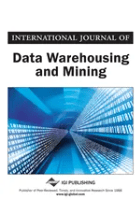
International Journal of Data Warehousing and Mining
Empowering Insights Through Data InnovationInternational Journal of Data Warehousing and Mining, published by IGI Global, is a vital resource in the field of data management and analytics, catering to researchers, professionals, and students alike. With ISSN 1548-3924 and E-ISSN 1548-3932, this journal has been at the forefront of disseminating pioneering research since its inception in 2005 and will continue to do so through 2024. Despite its current categorization in the Q4 quartile for Hardware and Architecture as well as Software, and its Scopus rankings, the journal aims to foster innovation within the domains of data warehousing, data mining, and their applications across various sectors. The absence of an open access option does not diminish its significance; rather, it ensures that the journal maintains rigorous peer-review standards, providing high-quality research outputs that contribute to ongoing discussions and advancements within the field. Researchers and practitioners looking to stay updated on the latest trends and methodologies will find the International Journal of Data Warehousing and Mining an indispensable tool in their academic and professional endeavors.
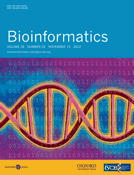
BIOINFORMATICS
Unveiling Innovations at the Intersection of Biology and ComputationBIOINFORMATICS, published by Oxford University Press, is a leading journal in the realms of biochemistry, computational mathematics, and computer science, with a notable impact factor that underscores its significance in the field. Since its inception in 1985 and continuing through its expected convergence in 2024, the journal has maintained a prestigious reputation, proudly residing in the Q1 category across multiple disciplines, including molecular biology and statistics. With a Scopus ranking placing it within the top percentiles of its categories, BIOINFORMATICS serves as an essential platform for disseminating high-quality research that advances knowledge and innovation at the intersection of biology and computational sciences. This journal not only offers both subscription and open access options, ensuring wider availability of its cutting-edge research, but it has also become a crucial resource for researchers, professionals, and students aiming to stay at the forefront of bioinformatics and related fields. Explore the latest findings and trends that define the future of biological research through this esteemed publication, any inquiries regarding the journal can be directed to its offices located at Great Clarendon St, Oxford OX2 6DP, England.
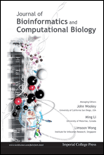
Journal of Bioinformatics and Computational Biology
Empowering Research Through Computational InsightsThe Journal of Bioinformatics and Computational Biology, published by WORLD SCIENTIFIC PUBL CO PTE LTD, serves as a significant platform for disseminating innovative research in the dynamic fields of bioinformatics and computational biology. With an ISSN of 0219-7200 and an E-ISSN of 1757-6334, this journal facilitates the exchange of ideas and advancements from its inception in 2003 and continues to be pivotal through 2024. Despite its classification in the lower quartiles—Q4 in Biochemistry and Q4 in Molecular Biology, along with Q3 in Computer Science Applications—the journal remains a valuable resource for researchers and students alike, as it emphasizes interdisciplinary approaches essential for tackling complex biological problems through computational methods. Located in Singapore, the journal encourages submissions of high-quality, peer-reviewed articles that offer insights into computational techniques that empower biological research. Although this journal does not offer open access options, its contributions to research are increasingly recognized across various academic platforms. As the field evolves rapidly, this journal continues to attract a growing readership, making it an essential reference point for anyone interested in the intersection of biology and computer science.
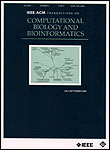
IEEE-ACM Transactions on Computational Biology and Bioinformatics
Advancing the Frontiers of Computational Biology and BioinformaticsIEEE-ACM Transactions on Computational Biology and Bioinformatics is a prestigious journal published by the IEEE Computer Society, focusing on the interdisciplinary field of computational biology and bioinformatics. Established in 2004, this journal has made significant strides in contributing to our understanding of complex biological systems through quantitative methods and computational techniques, and it spans a converged publication period through 2024. As a notable resource with an impact factor that positions it in the second quartile in the domains of Applied Mathematics, Biotechnology, and Genetics, it serves as an essential platform for researchers and professionals seeking to disseminate their findings to a global audience. The journal ranks impressively in Scopus, with Applied Mathematics holding a rank of #38 out of 635 (94th percentile) and Genetics at #86 out of 347 (75th percentile), highlighting its significant influence in the scientific community. While the journal is not open-access, it provides valuable insights and cutting-edge research that are crucial for advancing the fields of bioinformatics and computational biology, making it indispensable for students, researchers, and practitioners alike.

GigaScience
Empowering Researchers with High-Impact, Open Access KnowledgeGigaScience, published by Oxford University Press, is a pioneering open-access journal that has made significant strides in the fields of Medicine, Health Informatics, and Computer Science Applications since its inception in 2012. With an impressive impact factor and a consistent ranking in the Q1 category across multiple disciplines, GigaScience is recognized as an essential resource for researchers dedicated to advancing data-driven science. The journal's commitment to high-quality research is reflected in its Scopus rankings, placing it in the top 5% and 4% of its categories. As an open-access journal, GigaScience ensures that vital research is accessible to a global audience, fostering collaboration and innovation in an increasingly interconnected research landscape. Researchers, professionals, and students alike will find GigaScience instrumental in exploring the intersection of computational technology and life sciences, as it frequently publishes groundbreaking studies that shape future inquiries in these dynamic fields.
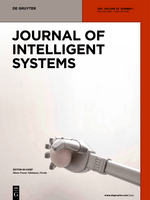
Journal of Intelligent Systems
Unlocking the Future of Artificial IntelligenceThe Journal of Intelligent Systems, published by DE GRUYTER POLAND SP Z O O, is a premier open access journal that has been at the forefront of advancements in the fields of Artificial Intelligence, Information Systems, and Software Engineering since its inception in 1991. With a commitment to disseminating high-quality research, the journal has been recognized in the 2023 category quartiles as Q3 in these critical areas, reflecting its relevance and impact in the academic community. The journal serves as a vital platform for researchers, professionals, and students interested in the evolving landscape of intelligent systems, offering insights into innovative methodologies and applications. As an open access publication since 2020, it ensures that research is readily available to a global audience, fostering collaboration and engagement within the scientific community. With a Scopus rank in the 65th to 69th percentiles across its categories, The Journal of Intelligent Systems continues to contribute significantly to the discourse on intelligent technologies and their implications for the future.

International Journal of Innovative Computing Information and Control
Fostering innovation through rigorous peer-reviewed research.International Journal of Innovative Computing Information and Control, published by ICIC INT, is a prominent platform dedicated to advancing the fields of computational theory, information systems, software engineering, and theoretical computer science. Since its inception in 2007, the journal has garnered attention for its rigorous peer-reviewed research and has established itself within the academic community, attaining a notable Q3 quartile ranking across its categories as of 2023. With an impressive track record of convergence from 2007 to 2024, this journal offers a wealth of insights and innovations for researchers and professionals striving to push the boundaries of technology and computing. While it operates under a subscription model, the journal's commitment to enhancing knowledge in the ever-evolving landscape of computational sciences makes it an essential resource for academics, providing timely articles that address contemporary challenges in the field.
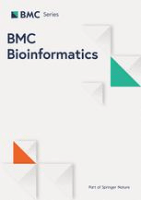
BMC BIOINFORMATICS
Unleashing the Power of Data in Life Sciences.BMC Bioinformatics is a leading open-access journal published by BMC, dedicated to the rapidly evolving field of bioinformatics. With its inception in 2000, the journal has established itself as an essential resource for researchers, professionals, and students alike, disseminating high-quality research that bridges the gap between biology and computational science. BMC Bioinformatics holds a reputable Q1 ranking in Applied Mathematics and Computer Science Applications, and a Q2 ranking in both Biochemistry and Structural Biology, reflecting its significant impact in these interdisciplinary fields. The journal's broad scope encompasses innovative methodologies, tools, and applications that drive progress in biological research through computational approaches. With open access since its inception, the journal ensures unrestricted availability of cutting-edge research findings, promoting knowledge sharing and collaboration in the global scientific community. As it continues to publish advancements up to 2024, BMC Bioinformatics remains a cornerstone for those seeking to enhance their understanding of bioinformatics and its vital role in modern science.